Winter brings many challenges for the backyard chicken-keeper, and frozen water is chief among them. You can make your own waterer heater for use with either metal or plastic waterers. It will cost less than $10, cost pennies to run and you can complete the project in under ten minutes!
We had record-breaking, sub-zero temperatures for long periods of time in 2010 here in Connectictut and my waterers never iced over the way they used to without these heaters. It doesn’t seem as though a humble, 40 watt lightbulb should be able to produce enough warmth to keep the water in a plastic waterer from icing over, but remarkably, it does!
Supplies:
-
10″, metal cookie tin (available at most dollar & thrift stores & likely in your garage or basement)
-
lamp assembly kit (available oniline, at hardware & home improvement stores OR buy a thrift store/tag sale lamp and take it apart)0
- 40 watt, incandescent light bulb (in deep-freeze conditions, use a 60 watt bulb)(in light of the government phase-out, some users recommend 40 watt candelabra bulbs or CFL bulbs, but I have not, so I cannot vouch for their effectiveness)
- Drill with 3/8″ drill bit
INSTRUCTIONS:
1. Drill a hole in the side of the cookie tin.
2. String the pre-threaded lamp stem assembly through the hole & tighten the screw on the stem.
3. Screw in the light bulb. Voila!
TO USE:
Put the top on the cookie tin and place the tin on a cinder block or another level surface in the chicken run. Plug into a GFI outlet. Place metal or plastic waterer on top of the water heater when freezing temperatures are anticipated. Disconnect when not in use or use a ThermoCube to turn the unit on when temperatures reache 35°F.
When I made my first cookie tin water heater, I found it difficult to believe that this device, which barely felt warm to the touch, could possibly do the intended job. I was only convinced the first frigid morning I went out into the run and found no ice ring to chip out of the waterer. You may have to try it to believe it too.
Kathy Shea Mormino
Affectionately known internationally as The Chicken Chick®, Kathy Shea Mormino shares a fun-loving, informative style to raising backyard chickens. …Read on
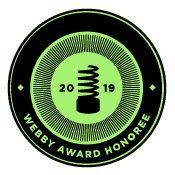

shop my SPONSORS
Winter brings many challenges for the backyard chicken-keeper, and frozen water is chief among them. You can make your own waterer heater for use with either metal or plastic waterers. It will cost less than $10, cost pennies to run and you can complete the project in under ten minutes!
We had record-breaking, sub-zero temperatures for long periods of time in 2010 here in Connectictut and my waterers never iced over the way they used to without these heaters. It doesn’t seem as though a humble, 40 watt lightbulb should be able to produce enough warmth to keep the water in a plastic waterer from icing over, but remarkably, it does!
Supplies:
-
10″, metal cookie tin (available at most dollar & thrift stores & likely in your garage or basement)
-
lamp assembly kit (available oniline, at hardware & home improvement stores OR buy a thrift store/tag sale lamp and take it apart)0
- 40 watt, incandescent light bulb (in deep-freeze conditions, use a 60 watt bulb)(in light of the government phase-out, some users recommend 40 watt candelabra bulbs or CFL bulbs, but I have not, so I cannot vouch for their effectiveness)
- Drill with 3/8″ drill bit
INSTRUCTIONS:
1. Drill a hole in the side of the cookie tin.
2. String the pre-threaded lamp stem assembly through the hole & tighten the screw on the stem.
3. Screw in the light bulb. Voila!
TO USE:
Put the top on the cookie tin and place the tin on a cinder block or another level surface in the chicken run. Plug into a GFI outlet. Place metal or plastic waterer on top of the water heater when freezing temperatures are anticipated. Disconnect when not in use or use a ThermoCube to turn the unit on when temperatures reache 35°F.
When I made my first cookie tin water heater, I found it difficult to believe that this device, which barely felt warm to the touch, could possibly do the intended job. I was only convinced the first frigid morning I went out into the run and found no ice ring to chip out of the waterer. You may have to try it to believe it too.



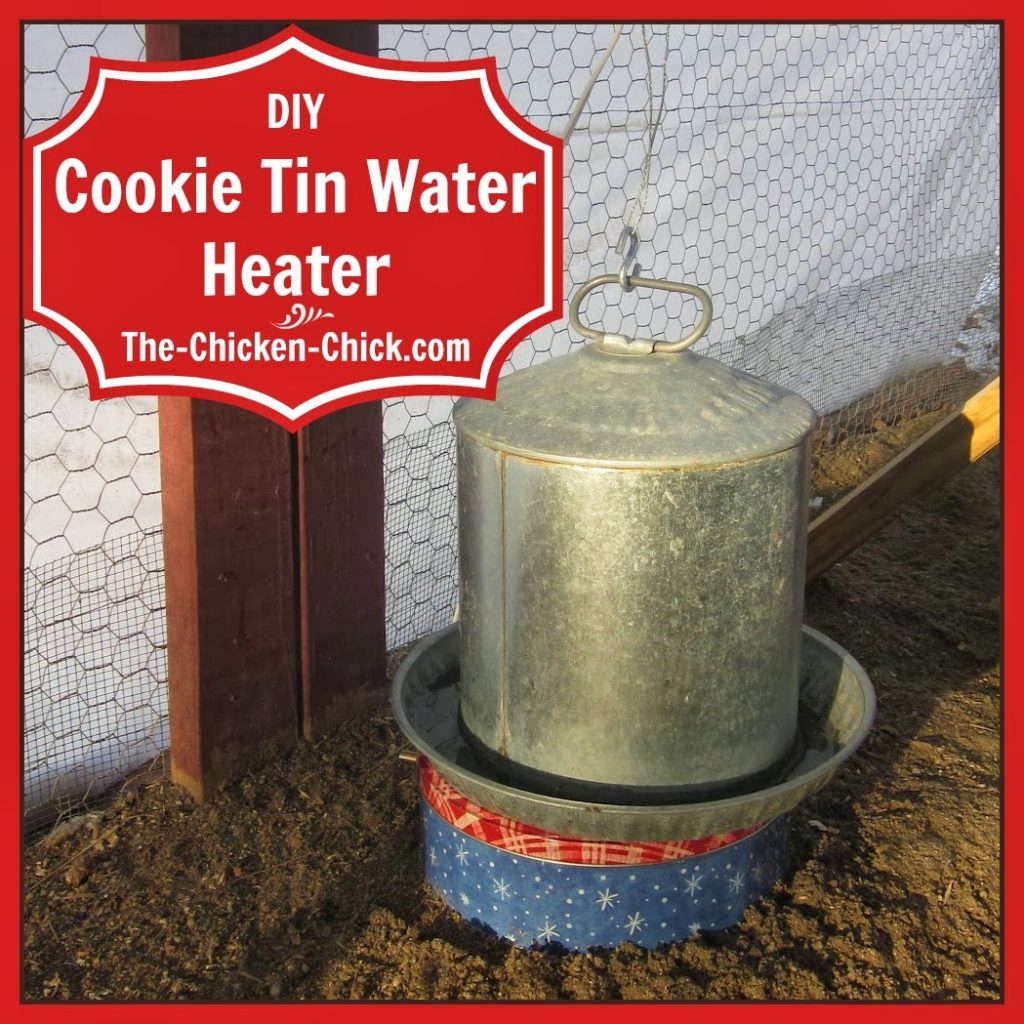
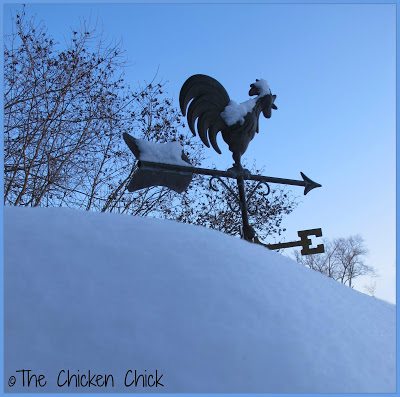
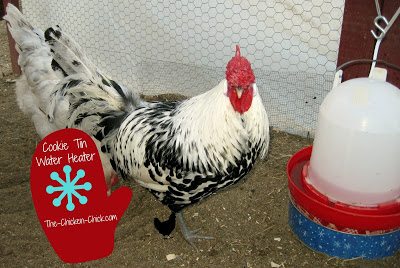
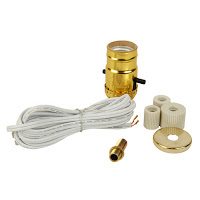
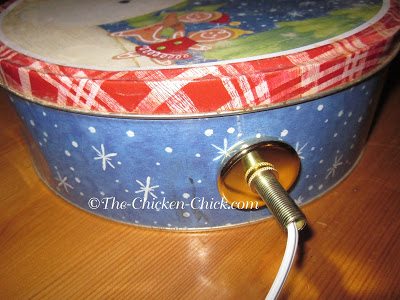
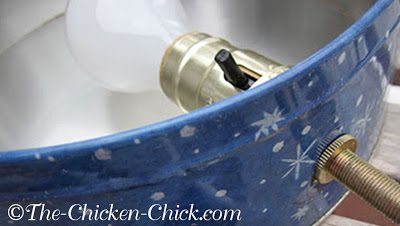
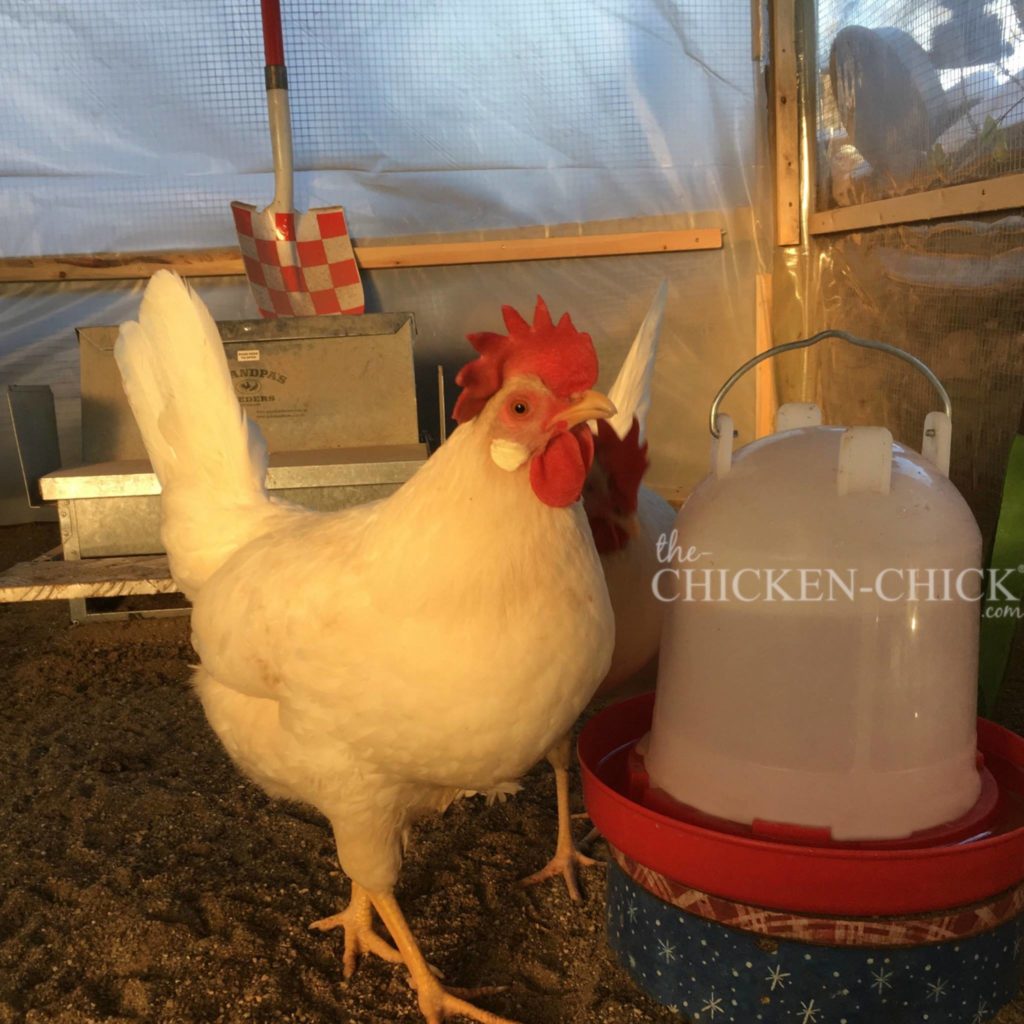
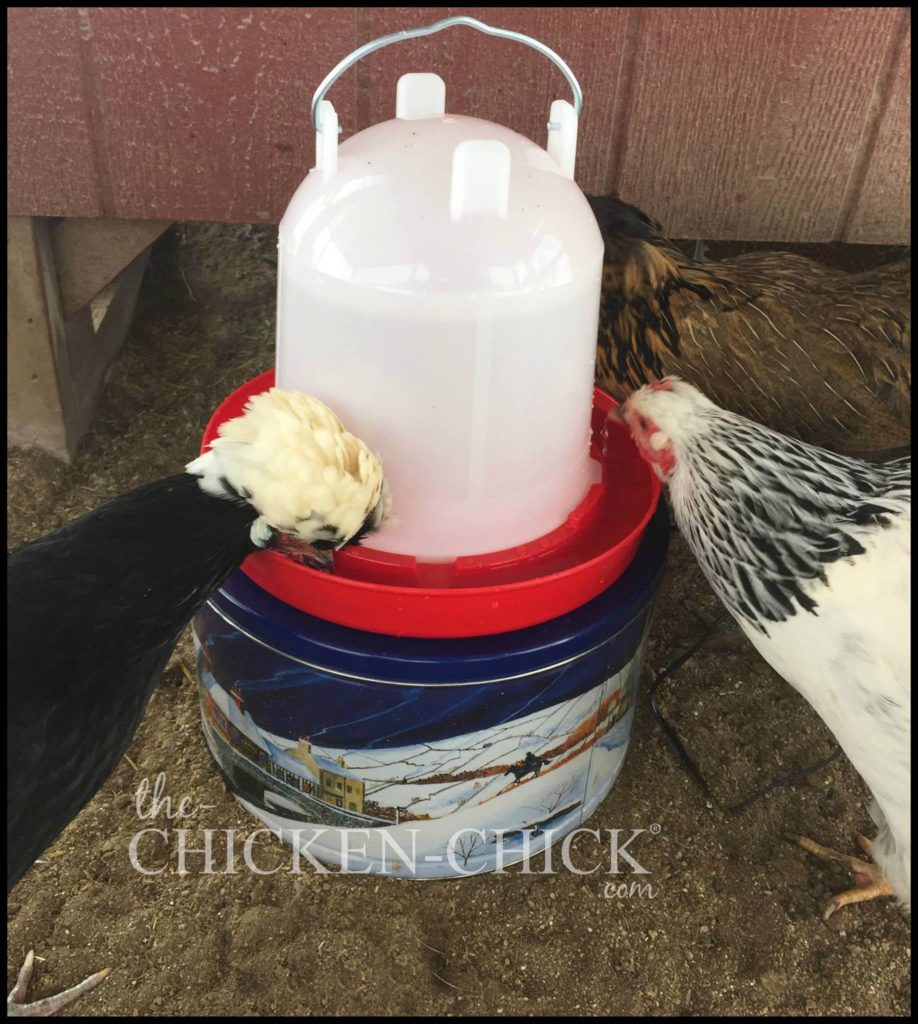
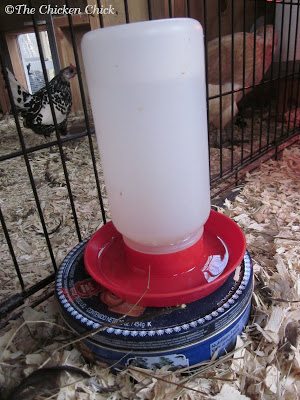
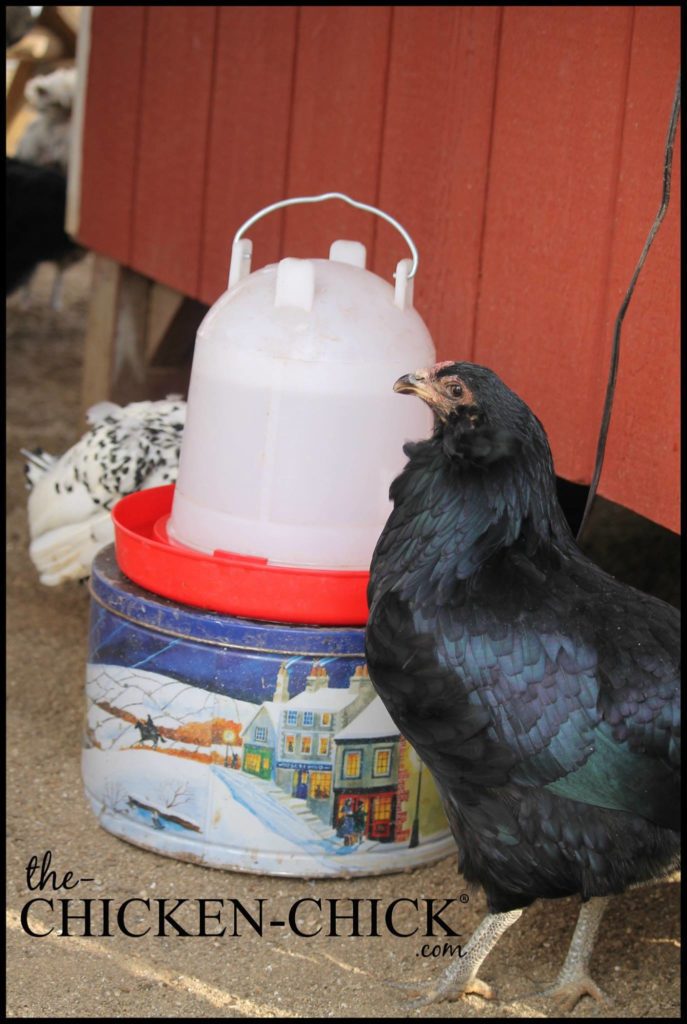








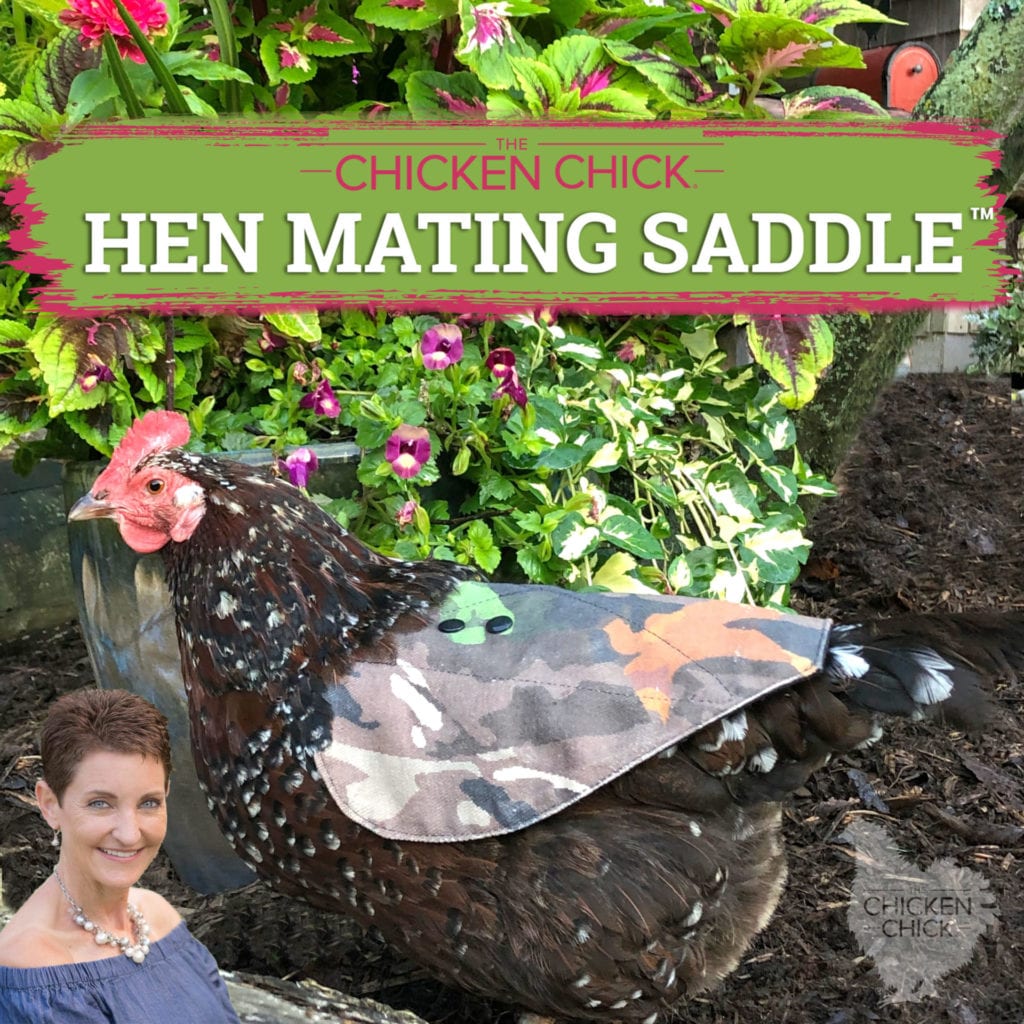
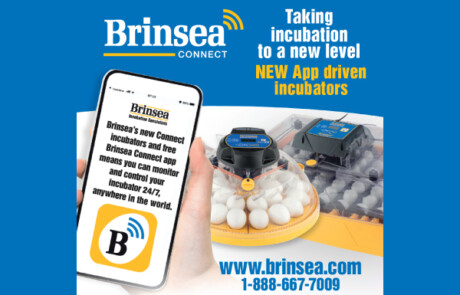

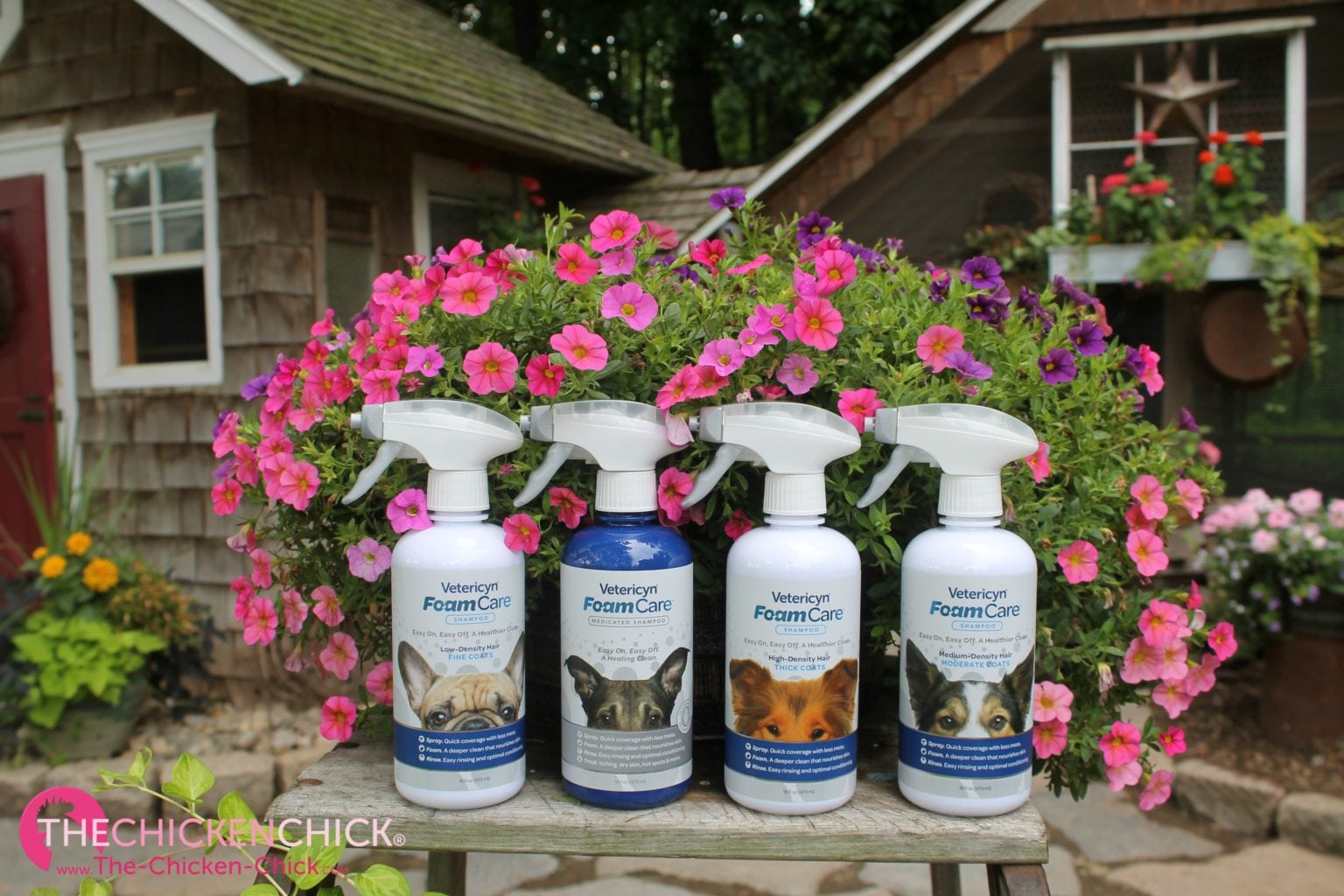
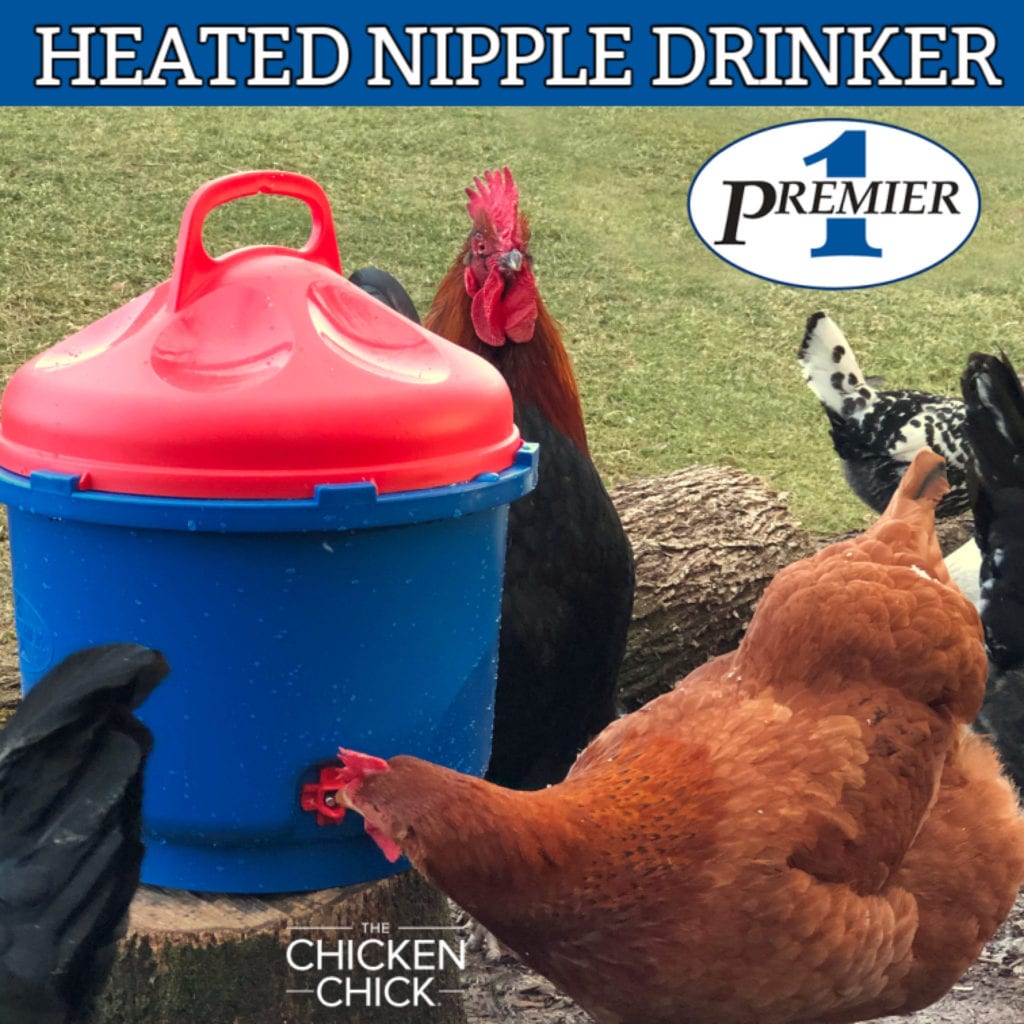

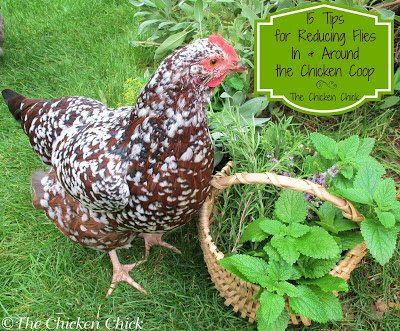

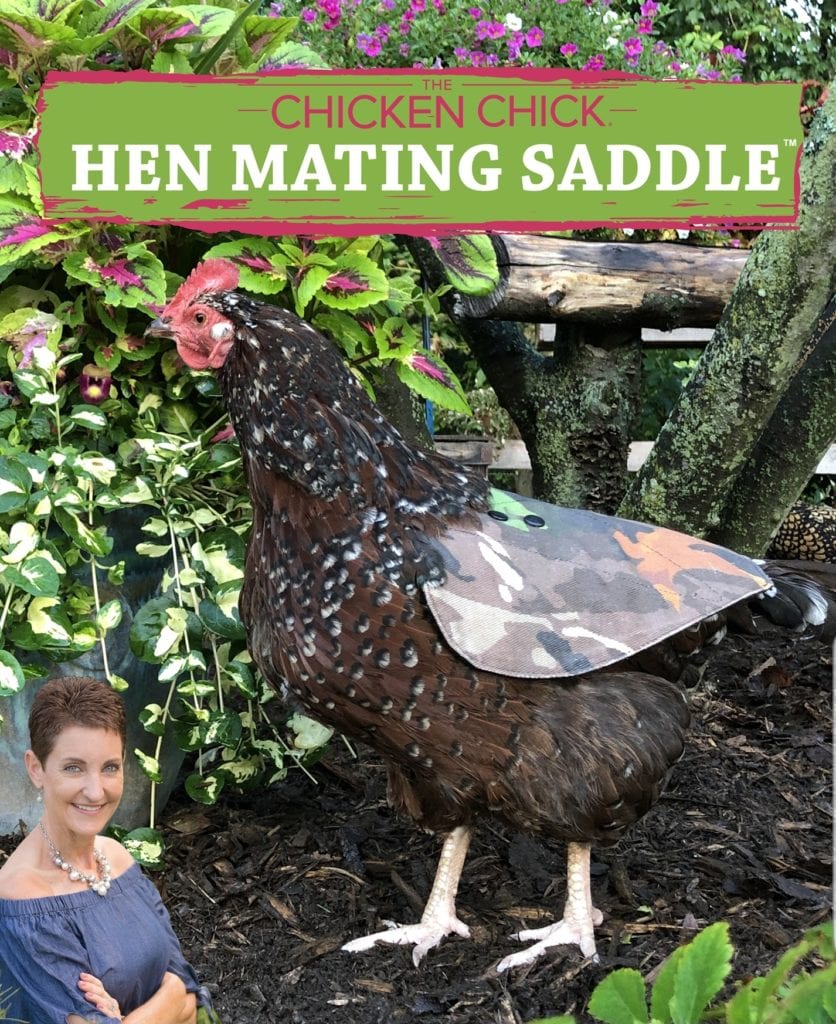
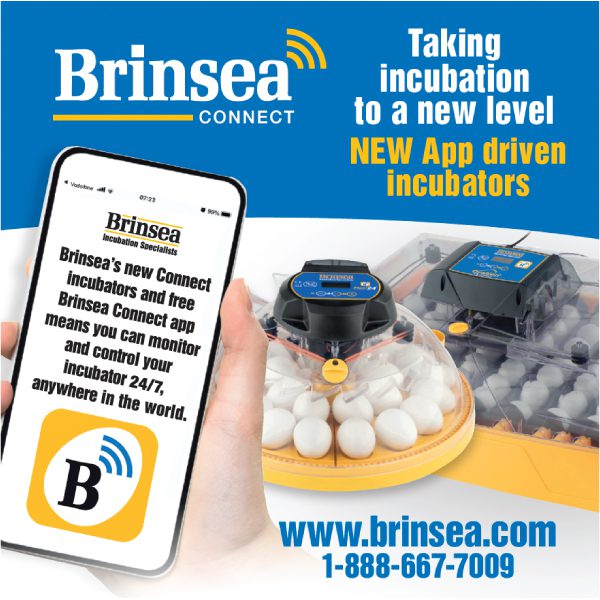


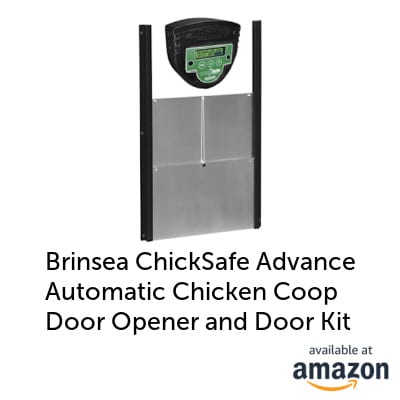
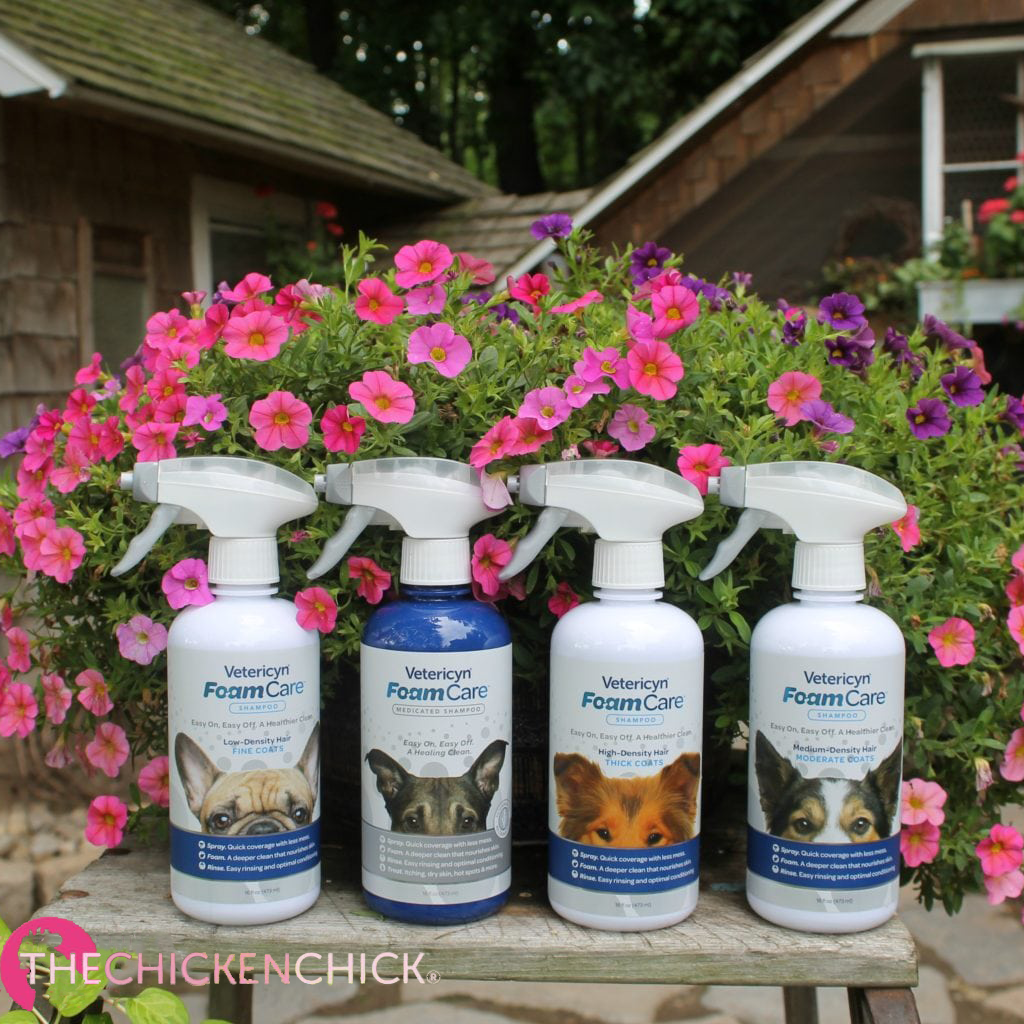
Has anyone discussed how PVC will leach PCB's into the water ? Perhaps these systems should be made with CPVC to avoid this problem.
I collect cookie tins. Now i have a good use for them thanks so much….
Need advice, my first time being a hen mother, want to build a coop in the corner of my shead the run off the side of the shead, any cheap way to build this. Starting out with two hens.
Awesome, l will be making this heater tin, I live just out side of Boston, and this is a first for me, going to build a run off my shead, just don't know how much room they will need, inside & out, also best way to keep them warm in winter… I need advice. Please help!
When I read this I was intrigued by this simple but effective idea, but I hope I will be forgiven for pointing out that in the UK or anywhere else in the world with similar mains voltage standards this arrangement is potentially LETHAL and should not be replicated under any circumstances. This is because our 240 volt standard and the different relationship between the live, neutral and earth wires means that this construction has the potential to deliver a fatal electrical shock, and it breaks all UK safety standards. Personally I would be a bit queasy about doing this with… Read more »